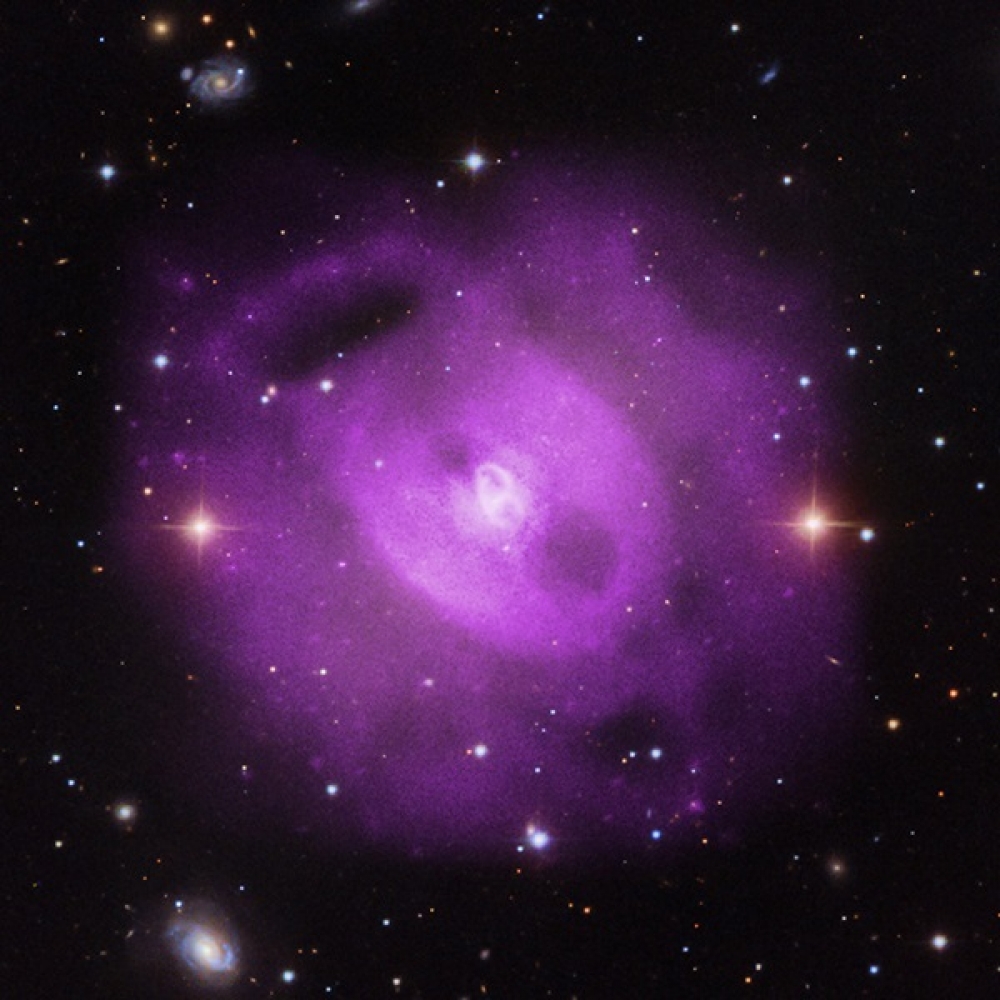Chandra finds evidence for serial black hole eruptions

The supermassive black hole in NGC 5813 has erupted at least three times, with the latest still occurring.
Chandra data show the supermassive black hole at the center of NGC 5813 has erupted multiple times over 50 million years. NGC 5813 is the central component of a group of galaxies called the NGC 5813 Group that is immersed in an enormous reservoir of hot gas.
Scientists discovered this history of black hole eruptions by studying the NGC 5813 Group, a group of galaxies about 105 million light-years from Earth. These Chandra observations are the longest ever obtained of a galaxy group, lasting for just over a week. The Chandra data are shown in this new composite image where the X-rays from Chandra (purple) have been combined with visible-light data (red, green, and blue).
Galaxy groups are like their larger cousins, galaxy clusters, but instead of containing hundreds or even thousands of galaxies like clusters do, galaxy groups are typically composed of 50 or fewer galaxies. Like galaxy clusters, groups of galaxies are enveloped by giant amounts of hot gas that emit X-rays.
The erupting supermassive black hole is located in the central galaxy of the NGC 5813 Group. The black hole’s spin, coupled with gas spiraling toward the black hole, can produce a rotating, tightly wound vertical tower of magnetic field that flings a large fraction of the inflowing gas away from the vicinity of the black hole in an energetic high-speed jet.
See full text